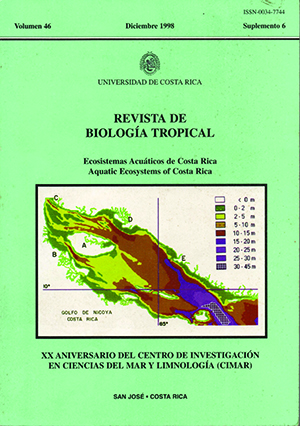Abstract
Thee Gandoca-Manzanillo region is part of the Limón Basin, located in southeastern Costa Rica. The depositional environment of Testiary sedimentary rocks shows a progressive shallowing through geologic lime, from deep marine (Miocene-Pliocene) to deltaic-fuvial and coral reef environments (Quaternary). Thee most dramatic geologic effect of the Limón-I991 earthquake was coseismic uplift of the shoreline, which ranged from 0.3 to 0.6 m in the Gandoca- Manzanillo region. This event caused liquefaction of thick deposits of young, fine-grained fluvial sediments in the region, and produced a tsunami affecting the vicinity of Manzanillo and Punta Uva, but the heaviest damage was reported in northwesterm Panamá. The effects of the tsunami may have been diminished in Costa Rica because of the presence of fringing reefs, and the fact that this part of the coast had been coseismically uplifted by the time tsunamis arrived at the coast. Two platform levels were dated using radiocarbon method on coral samples. The platform level at 1.5·2.0 m had radiocarbon ages of 5 220±5O years B.P. and 4 540±50 years B.P., and the 8.0-10.0 m terrace level was dated at 27 14S±290 years B.P yielding a 1.8 mm/year long-term coseismic uplift rate. Variations in the heights of individual platforms reflect a very irregular coseismic uplift behavior, and probably also an irregular earthquake time recurrence period. However, similarities between the 1991 and 1822 events suggest 150 to 200 year as the earthquake recurrence time.##plugins.facebook.comentarios##

This work is licensed under a Creative Commons Attribution 4.0 International License.
Copyright (c) 1998 Revista de Biología Tropical
Downloads
Download data is not yet available.


